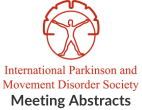The impact of motor and non-motor symptoms on walking capacity in people with Parkinson’ disease
Objective: This study aimed to evaluate the motor and non-motor factors associated with walking capacity in people with Parkinson’s disease (PwPD). Background: Walking over short…Walking and Turning of Parkinson’s Disease – Impacts of Freezing of Gait
Objective: This study aimed to find the comprehensive characteristics of locomotion in PD, including forward- and backward walking and turning, especially the impact of FoG.…Cognitive and psychiatric symptoms are associated with walking difficulties in mild Parkinson’s disease
Objective: To investigate the association of different aspects of cognitive impairment, depression and anxiety with walking difficulties in daily life in persons with mild PD.…Motor asymmetry in Parkinson’s disease: relation with freezing of gait
Objective: To evaluate the relation between motor symptoms asymmetry in patients with Parkinson’s disease (PD) and freezing of gait (FOG) episodes. Background: It is yet…The effect of levodopa and cognitive-motor dual interference on gait parameters in PD FOG
Objective: Our purpose in conducting this study was to investigate the effects of dopamine on dual task effects associated with specific gait parameters between individuals…Wearable sensors- early prediction of freezing of gait episodes based on bilateral leg stepping coherence in patients with Parkinson’s disease
Objective: To evaluate the characteristics of a freezing of gait (FOG) detection algorithm based on continuous data from inertial sensors (placed bilaterally on the shanks…Factors influencing explicit locomotor learning and saving by people with Parkinson’s disease
Objective: To determine factors associated with explicit locomotor learning and saving by people with Parkinson’s disease (PD). Background: PD leads to movement problems such as…Improving fall prediction in Parkinson’s disease: A machine-learning-based approach
Objective: To explore the prediction of falling in PD using a machine-learning-based approach. Background: The strongest predictor of falling in Parkinson’s disease (PD) is the…Ambulatory Capacity Measure derived from the Movement Disorders Society Unified Parkinson’s Disease Rating Scale (MDS-UPDRS)
Objective: (1) Construct a measure of ambulatory capacity derived from the MDS-UPDRS that is similarly structured to the original Ambulatory Capacity Measure (ACM) derived from…Using machine learning methods to explore gait features associated with freezing of gait in Parkinson’s Disease
Objective: To find hidden gait patterns associated with freezing of gait (FoG) in Parkinson’s disease (PD) by using machine learning techniques on the spatial and…
- « Previous Page
- 1
- …
- 17
- 18
- 19
- 20
- 21
- …
- 41
- Next Page »
